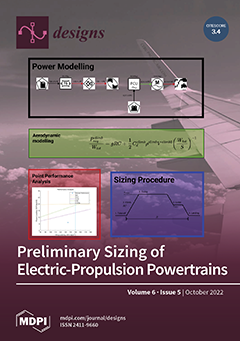Experimental assessment of the hydrogen (H
2)-adsorption capacities of metal-doped carbon nanostructured materials were investigated in this study. Given their intrinsic characteristics, nanostructured carbonic materials show great potential for different applications that require H
2, one such being their use as
[...] Read more.
Experimental assessment of the hydrogen (H
2)-adsorption capacities of metal-doped carbon nanostructured materials were investigated in this study. Given their intrinsic characteristics, nanostructured carbonic materials show great potential for different applications that require H
2, one such being their use as hydrogen carriers in the automotive sector. The current paper considers two types of carbonic substrates (carbon nanotubes and polyaniline) functionalized and doped with platinic metals: Pt, Ru and Ir. The H
2-adsorption capacities of the materials were assessed at 293 K and at relatively low pressures (10, 20 and 30 bar). Thus, nanostructured polyaniline (p-C
6H
5NH
2) and multi-walled carbon nanotubes (MW-CNTs) were subject to noble-metal doping in order to assess their physical H
2-adsorption capacities. The two types of substrates have different structures and characteristics, one being a “synthetic metal” and the other an amorphous carbon substrate. The metals used for doping were Platinum (Pt), Iridium (Ir) and Ruthenium (Ru), and the doping procedure consisted of chemical reaction between the metals’ salts and the carbonic substrate after the latter’s physical activation. Physical H
2-adsorption capacity was determined with equipment designed to measure porous materials’ adsorption capacities at pressures ranging from 1 to 200 bar. The obtained results showed an increase inH
2-adsorption capacity of 293% from 10 to 30 bar for Ru, 270% for Ir and 256% for Pt doping in the case of the MW-CNTs, and 296% for Ru, 282% for Ir and 251% for Pt from 10 to 30 bar in the case of p-C
6H
5NH
2. As the main conclusion, even though Pt is known to be the main metal used in reactions involving H
2, Ru and Ir showed better potential for this application, namely, as hydrogen-carrier materials for use in the automotive sector.
Full article




